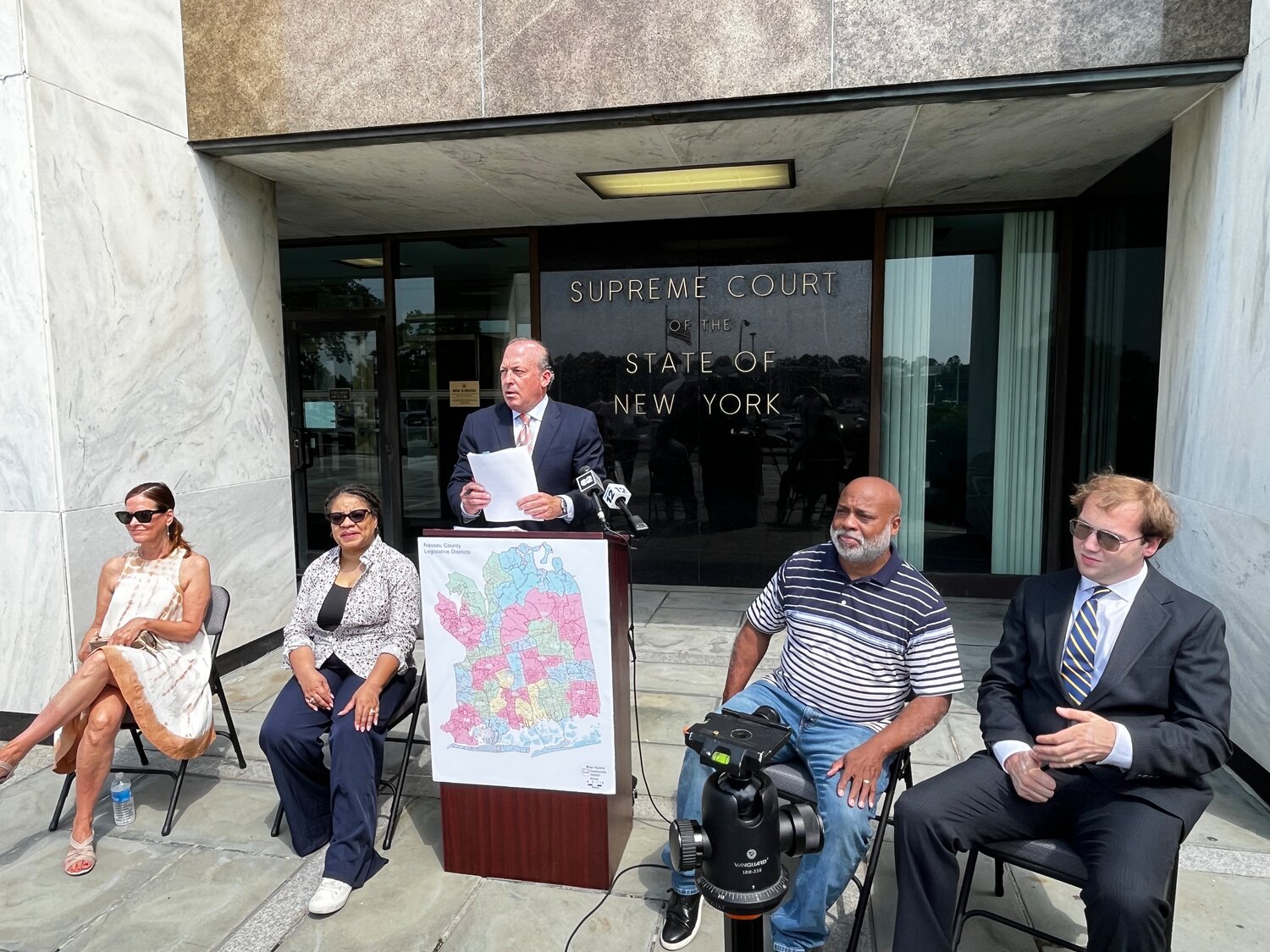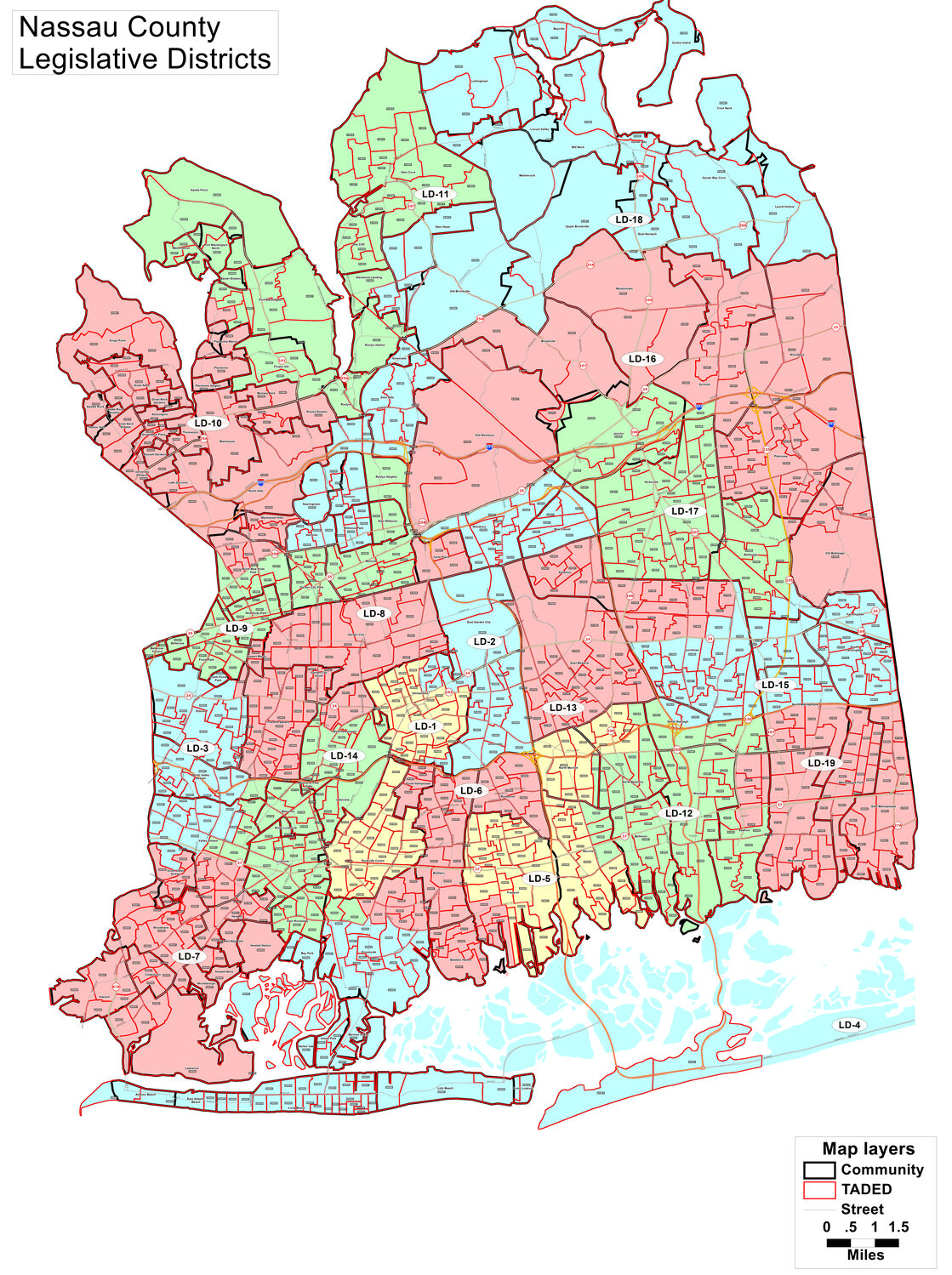Nassau Democrats, residents sue county legislature over proposed map, claiming it is gerrymandered
Republican-led chamber accused of drawing unfair district maps
Nassau County Democrats, along with 21 plaintiffs from throughout each of the 19 legislative districts, have filed a lawsuit against the county legislature. They allege the recently redrawn legislative districts are racist, gerrymandered, and give an unfair advantage to Republicans, who hold majority control over the chamber.
This lawsuit was filed nearly five months after the Nassau County Legislature voted to approve the new map as part of the county's redistricting process, which takes place every 10 years in-line with the census. The measure drew the support of 11 Republicans, but was opposed by seven Democrats.
The suit also comes less than four months before the Nov. 7 elections when all 19 seats are up for grabs. It also comes on the heels of a state appellate court deciding in an unrelated matter that New York's congressional districts — which were redrawn last year by a special master — should be done again.
Among the issues Democrats have with the new county maps include moving Democratic Minority Leader Kevan Abrahams from the district he has represented for more than 20 years, to a new Republican-leaning district. The suit claims voters leaning in one direction are being packed into two districts, while the rest are spread out to other districts as a way to “dilute their voting strength.” The maps, according to the suit, forces two Democrats to run against each other in one district, while leaving Republican incumbents unchallenged.
"Republicans are trying to rig the upcoming election by gerrymandering legislative districts to keep themselves in power," said David Mejias, the attorney representing the Nassau County Democratic Committee and the 21 other plaintiffs.
Mejias seeks an injunction against using the maps, asking the court to provide a timely opportunity to present a lawful, redrawn version before the upcoming elections.
“They tried to limit public hearings,” Mejias said of Republicans, during a recent news conference. “They introduced the current map at the 11th hour, and they have refused to produce the partisan consultant that they hired to draw this map, whose purported analysis and methodology is the best kept secret in Mineola.
“We've asked for the analysis. We’ve asked for the methodology, and they have said ‘no.’”
Democrats, on the other hand, hired what they describe as a non-partisan independent, Dan Magleby, to produce a fair and competitive map.
“All of his methodology, analysis and work product was made public,” Mejias said. “He testified at a public hearing, and the Republicans have refused to produce the expert that drew this gerrymandered partisan map to the public, to the Democratic minority legislators, to the redistricting commission.”
Magleby’s work consisted of creating 10,000 computer-simulated legislative maps through a “party-blind nonpartisan process,” Mejias said. The Republican-approved map does not resemble even one out of Magleby’s maps, the attorney added — something that is not even stastically possible.
“An objective mathematical analysis shows that this map is an illegal partisan gerrymander,” Mejias said.
However, Republicans disagree with any assertion this map is illegal.
“The lines drawn are fair, reasonable and in accordance with applicable law,” said Nassau County Executive Bruce Blakeman, in a statement.
Nassau County Republican chair Joseph Cairo described the legislative districts as “fair and competitive.”
“The districts comply with all applicable federal and state redistricting laws,” Cairo told reporters.
But some voters — like John Jarvis, who is also a plaintiff in the lawsuit — say that’s not true. Instead, he describes it as a human rights issue, with the current maps for the districts being “extremely unfair” and clearly “discriminate against certain groups of people.”
As a way to prove his point about how the districts are already drawn, Mejias used Blakeman’s 2021 victory over Laura Curran. There, Blakeman won with 52 percent of the vote, while his fellow Republicans managed to win 60 percent of the legislative races. He also explains that even when Curran won in 2017, Republicans still managed to get nearly 60 percent of the legislative seats.
“How do you get 48 percent of the vote countywide (in 2017) and still win those seats and have a solid majority in the legislature?” Mejias asked. “That can only happen if those seats are gerrymandered.”
Democrats are prepared for a long and lengthy legal battle, but insist they will fight this until the end.
“If they won’t listen to the people,” Mejias said, “the Republicans will have to listen to the courts.”

 51.0°,
Overcast
51.0°,
Overcast 









